Some pertinent information about us when camping:
1.) No campfires! Ever! In the late summer, it's dangerous, but moreover it makes you smell awful. If you're camping near others, you will smoke them out and even a small fire is quite bright when you're in the middle of nowhere! We cook on a tiny backpacking stove when we want 5 min noodles. That's it.
2.) It gets dark at 9pm. We're in bed by 8:30pm. Sun's up at 6am. We're up close to then.
3.) It's quiet in the wilderness! You can hear a twig snap hundreds of feet away. Enjoy the serenity!
Now, I didn't know that Lake Bolan had a maintained campsite. We NEVER go to campsites because most people think that the wilderness should be treated just like their home and violate all of my most basic rules of respect above. This trip was no exception. Every campsite was full of noisy families who all burned large fires, talked late into the night and drove enormous trucks with loud engines. A few people pulled up to us at about 6pm and asked if they could share our space: "We won't intrude at all; you won't notice us..." they promised. They then didn't set up their tent until past dark, then started a fire (for which they literally tore down huge rotting stumps in the middle of the night!) and continued talking for hours. Since we had been in bed before dark, they drove me mad! Fortunately, I woke up at 5:45am and tried my hardest to make as much noise as I could: Me at my loudest was far quieter than them at their quietest.
We learned that there is a lookout camping site at the top of the ridge which you can reserve for yourself. We'll do this next time: it must have a fantastic view! And most importantly, the solitude I expect in the wild.
It was a cute little lake and as I mentioned, lots of flowers. The following are from the walk around the lake itself, which took less than an hour. Thousands and Thousands of bees and hoverflies. Lisa was a little afraid but they don't care about you unless you are filled with nectar. Just plow through the thicket and ignore the ever buzzing shrubbery.
I think this is Erigeron aliceae. I very much could be wrong as I don't know that whole family very well.
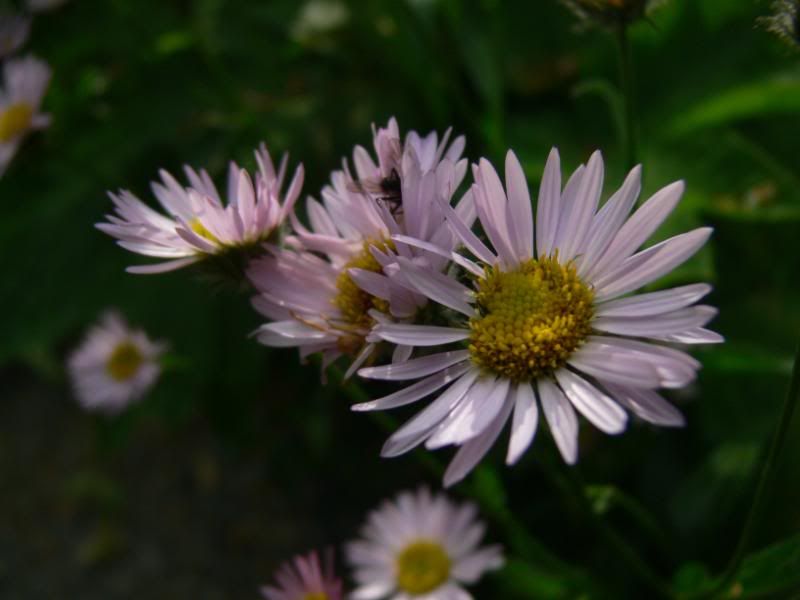
Delphinium glaucum. Not exactly the most compact plant at about 7ft tall on a single stem but the flowers are nice in the masses of grasses adjacent to the lake. I'm holding the camera well above my head to get this shot.
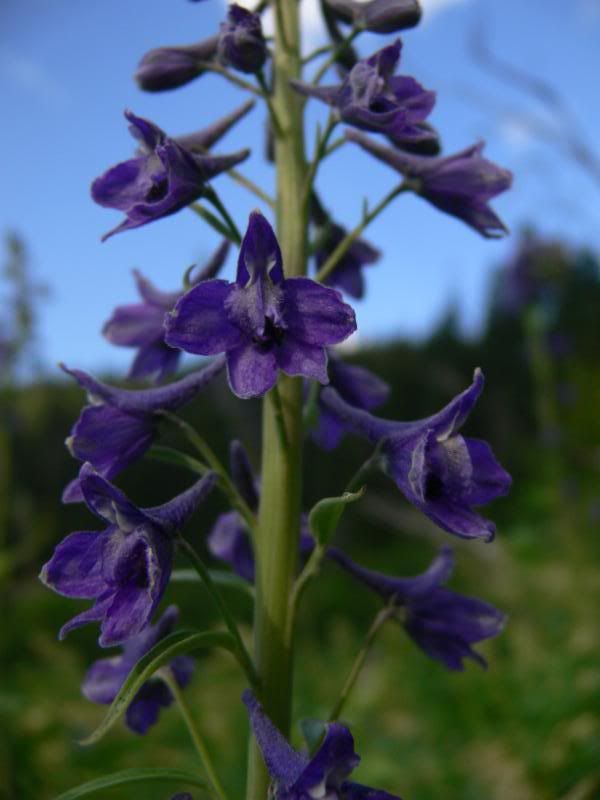
A new Mimulus for us, Mimulus moschatus. Tiny yellow spots dotting the trail margins.
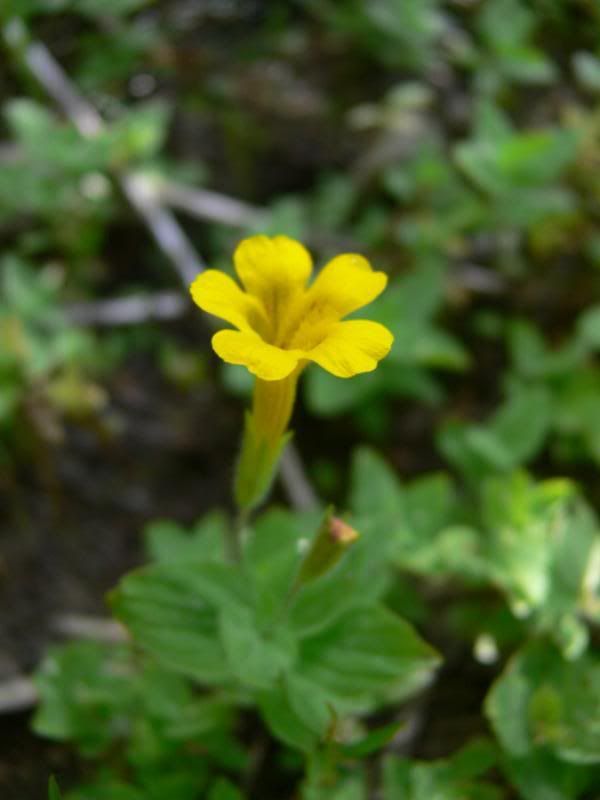
I really don't know the whole parsley family...
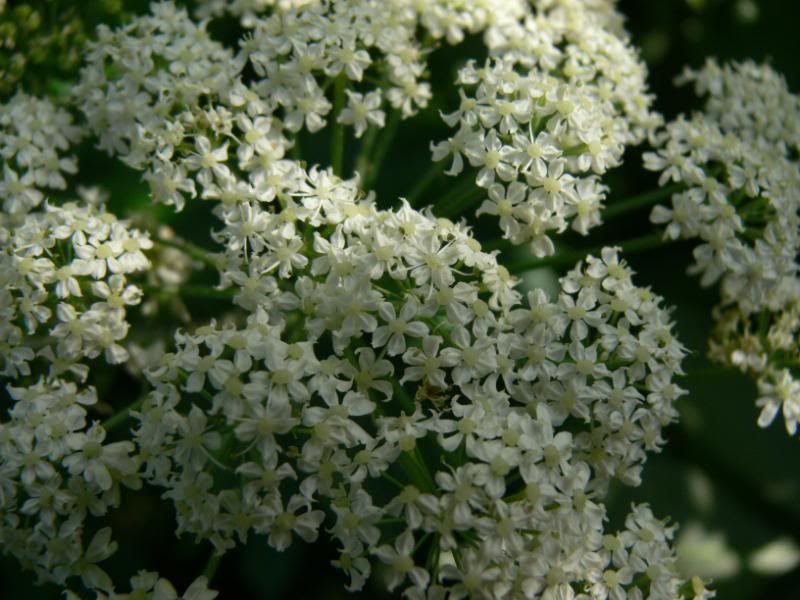
Up in the drier parts of the woods, Phlox adsurgens.
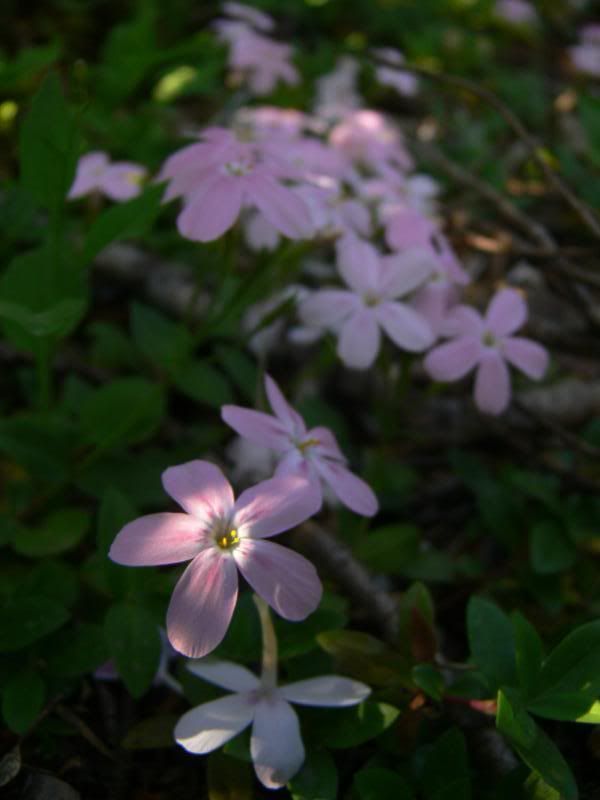
In a seep with mosses and other lush growth, Polygonum bistortoides.

A huge clover that was almost a vine, 3 or 4 feet tall.
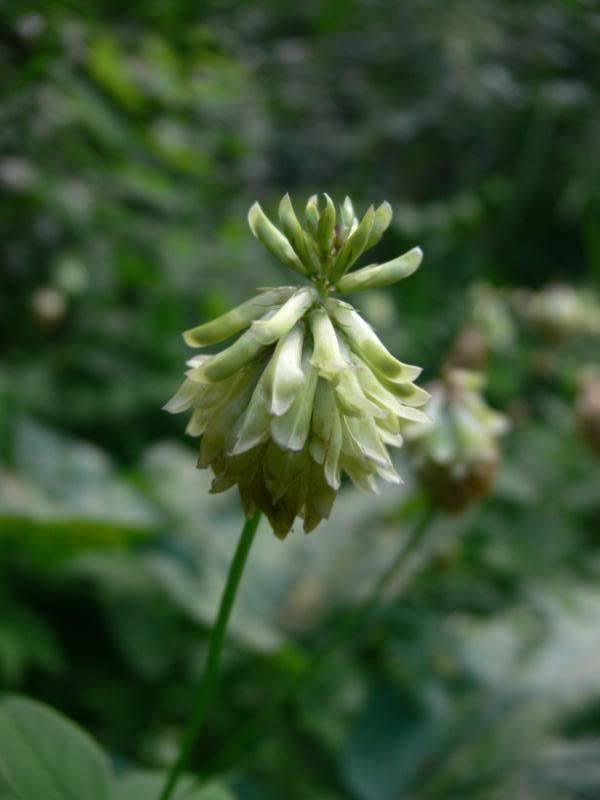
Moist hillside. Much buzzery.
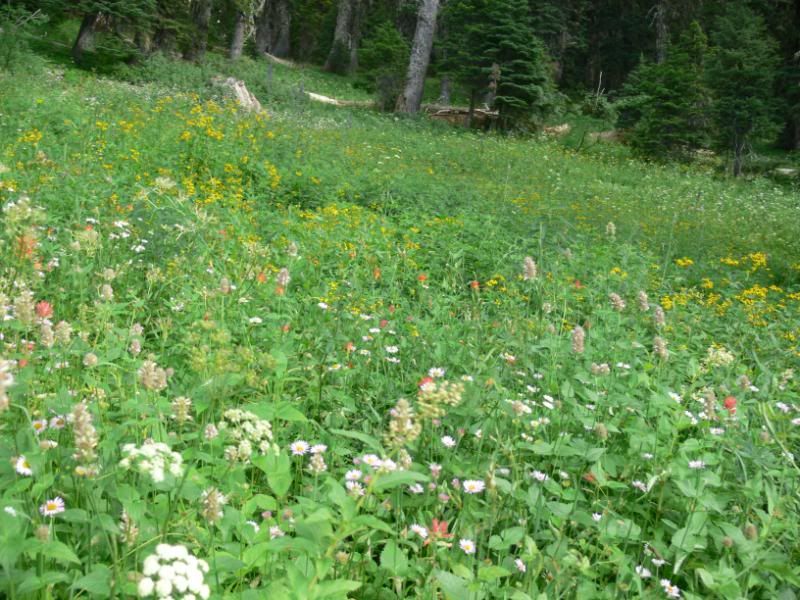
A huge spineriferous gooseberry! Possibly Ribes marshallii or lobbii or roezlii... I dunno: all the flowers were but dried husks of their former selves.
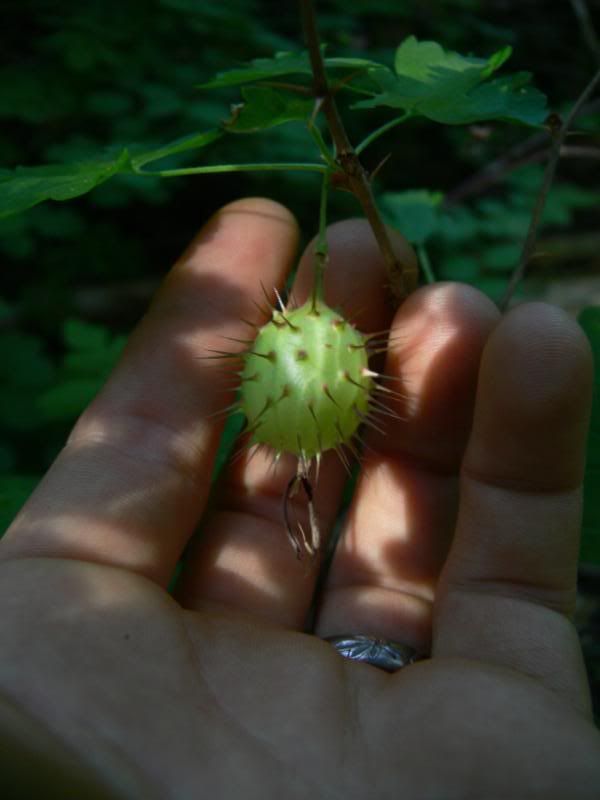
Towering above Lake Bolan (at 5400') is a sheer cliff that thrusts it's summit (at 6200') into the sky. I went on a walk before sunset up the ridge. If I had left about 2 hours earlier, I would have made it all the way to the top, but I didn't want to get caught out there in the dark. I made it to the first ridge at about 1mi along the trail. The top is at 1.3mi. It was quite steep for quite a while but very picturesque.
It's immediately dry once you leave the lake marginalia. A little Yarrow, Achillea millefolium thrives in the drought.
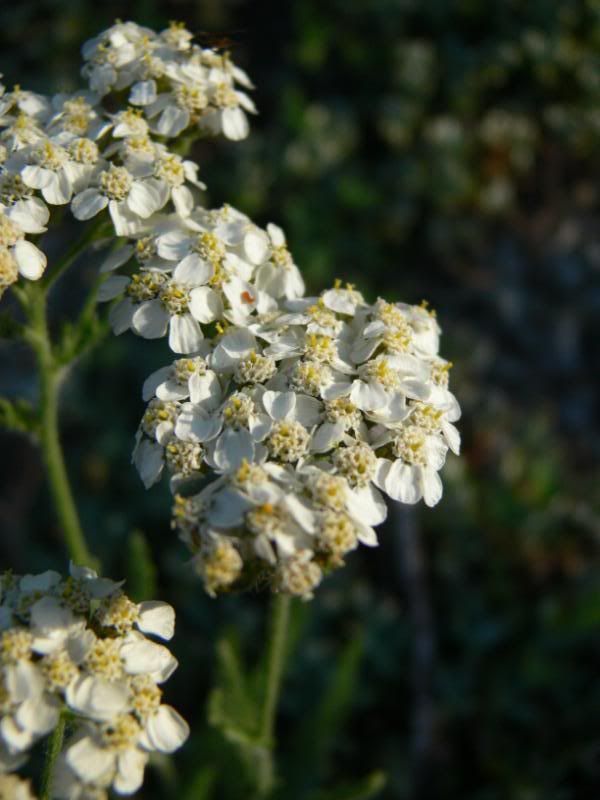
This tree was particularly enormous. Abies or Picea... I forgot to look!
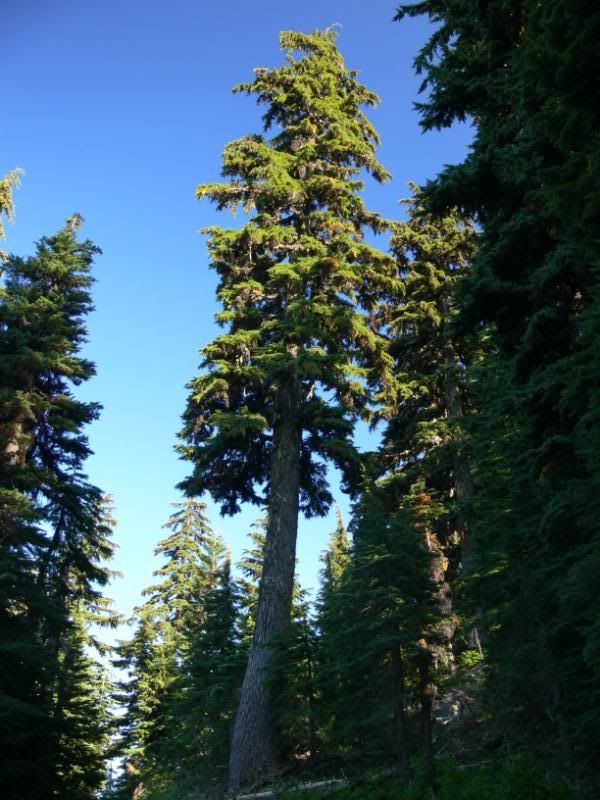
The Paintbrush and Asters effloresced voraciously.
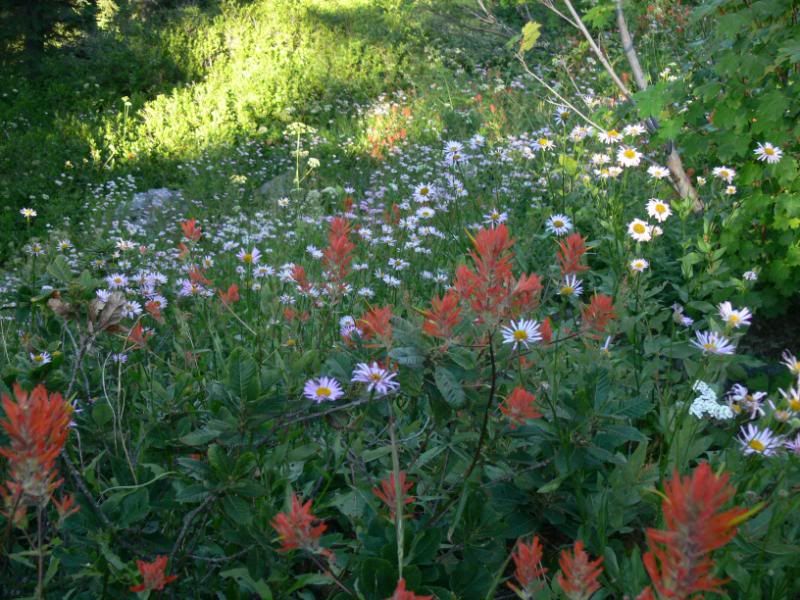
Closeup of Castilleja.
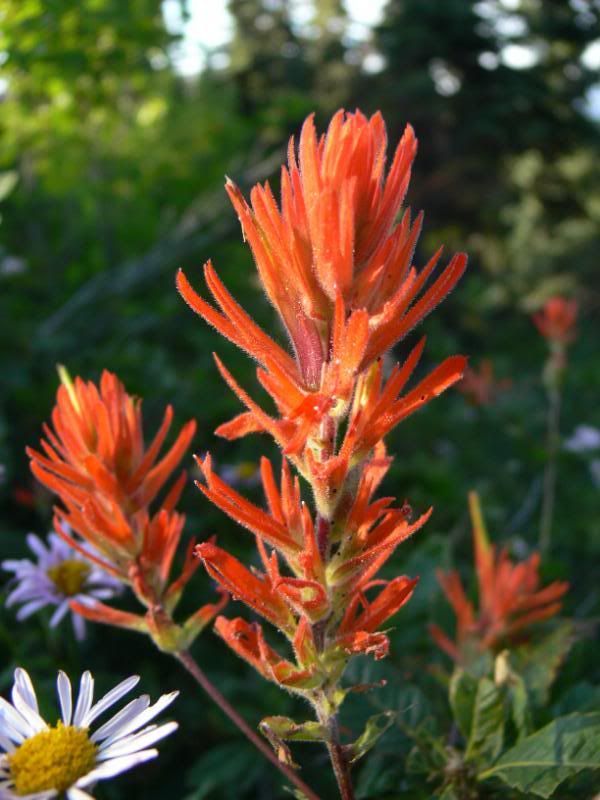
Closeup of Erigeron.
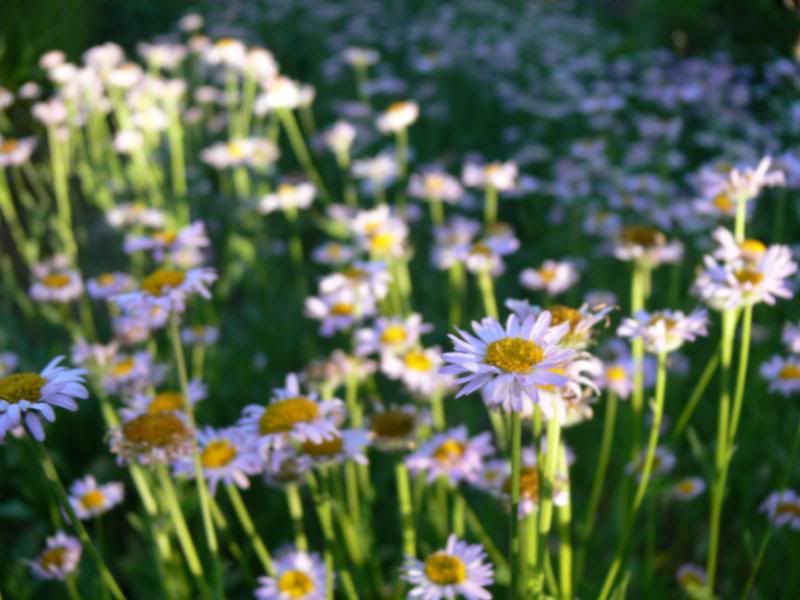
Open boulder fields scarred the face of the mountain and allowed for maximal solar radiation. The rock gardens were littered with millions of Sedum obtusatum (only a few still in scattered bloom). Much more interesting, there are quite a few species of fern native to these mountains which take both very dry conditions and full sun! Here's the first: Cheilanthes gracillima.
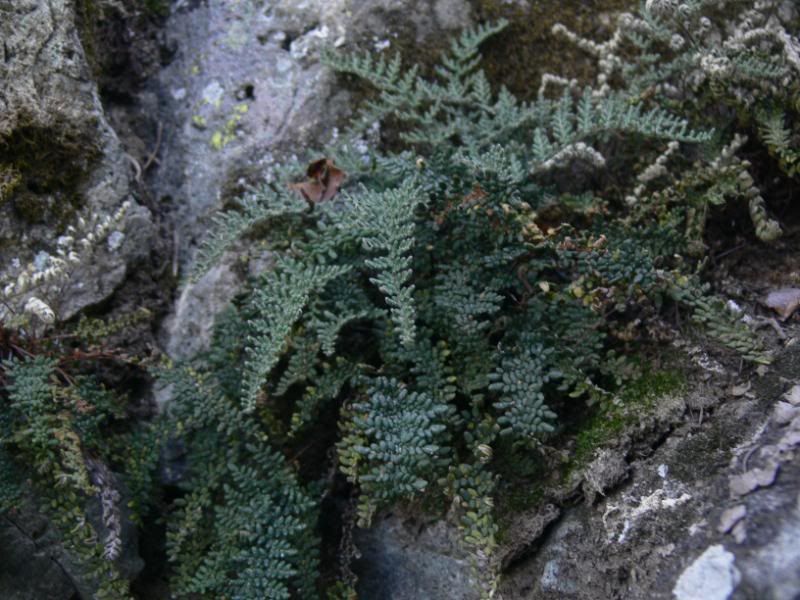
And the second: Cryptogramma acrostichoides. Both of these ferns are quite small in stature, standing about squirrel high. You can see the encroaching Sedum in the background. Sedum squeaks when you step on it by accident.
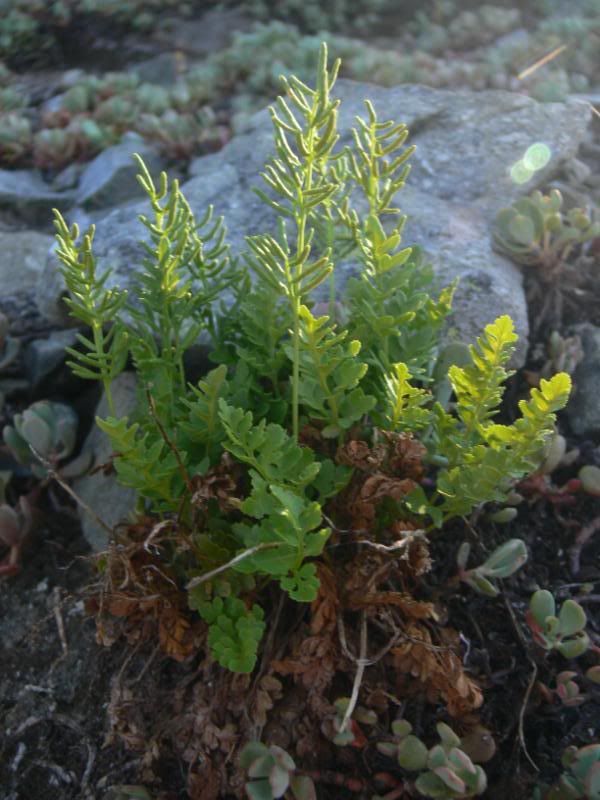
Ok, so I made it to the top here... Blooms abound in and out of the rocky cracks and massive views across the evergreen hills below.
A Buckwheat... Either Eriogonum compositum or ternatum or umbellatum, probably.
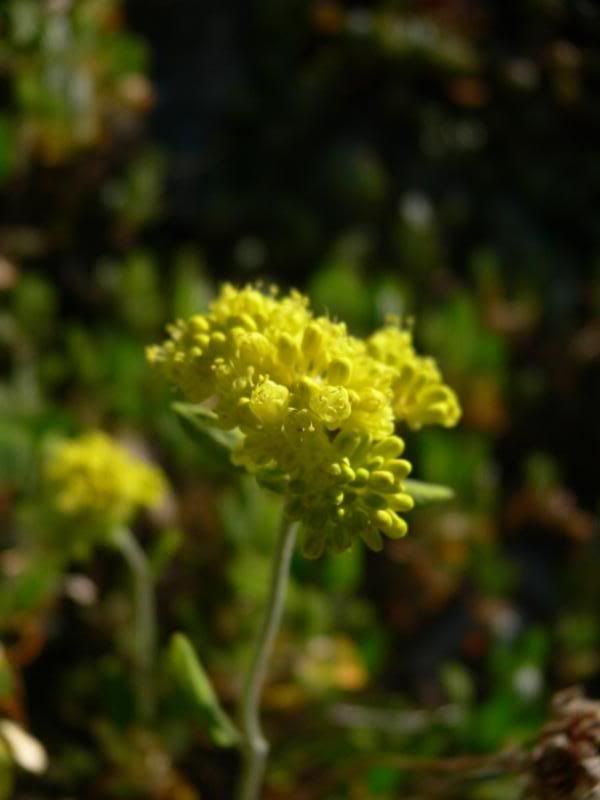
Orthocarpus cuspidatus ssp. copelandii. Finally figured this one out.
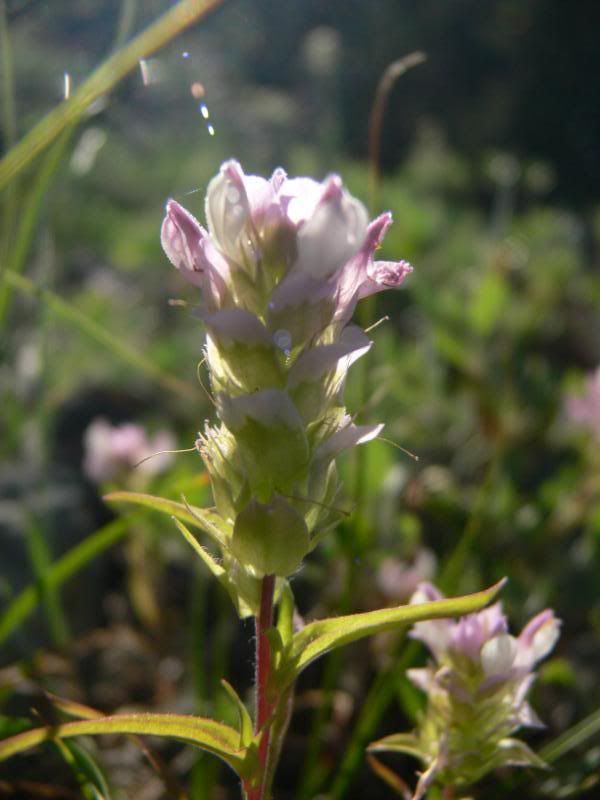
Atop the ridge was a substantial population of Lilium washingtonianum, in late summer disrepair.
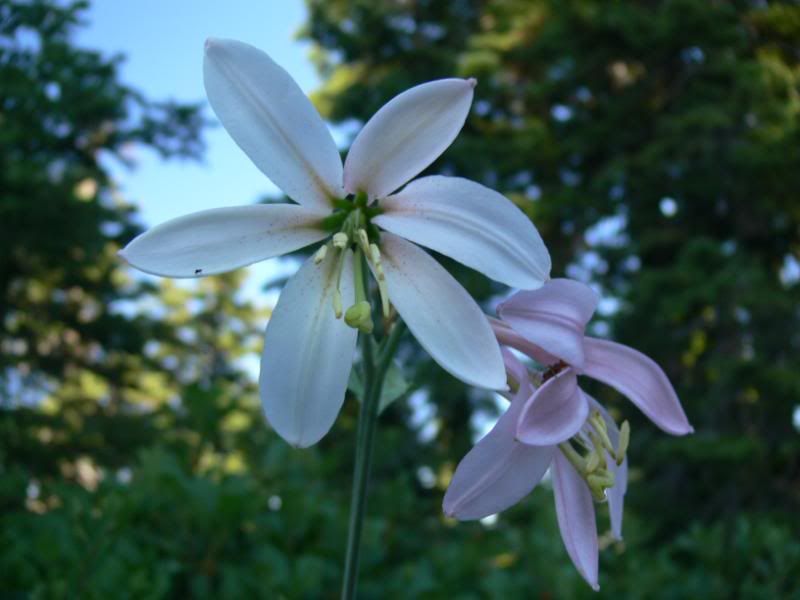
These are Lilium washingtonianum ssp purpurescens because of the dark color they turn as they fade.
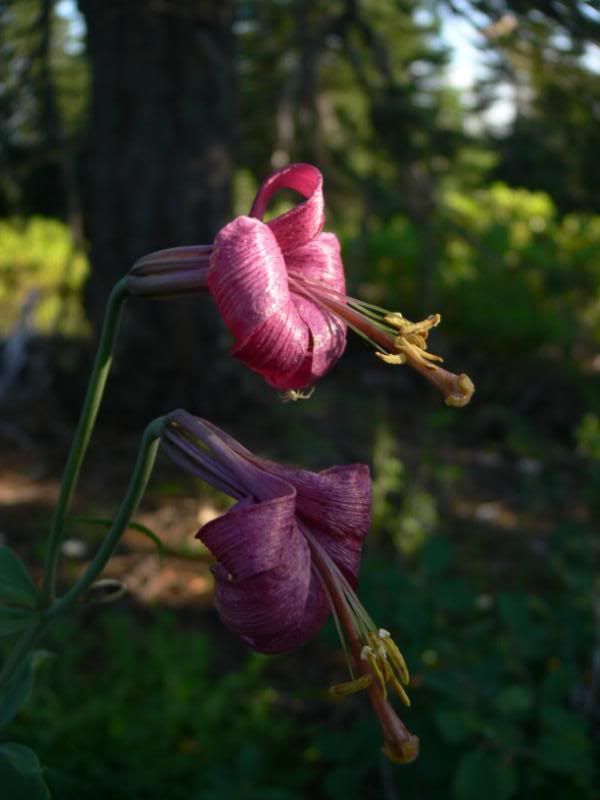
Nothochelone nemorosa.
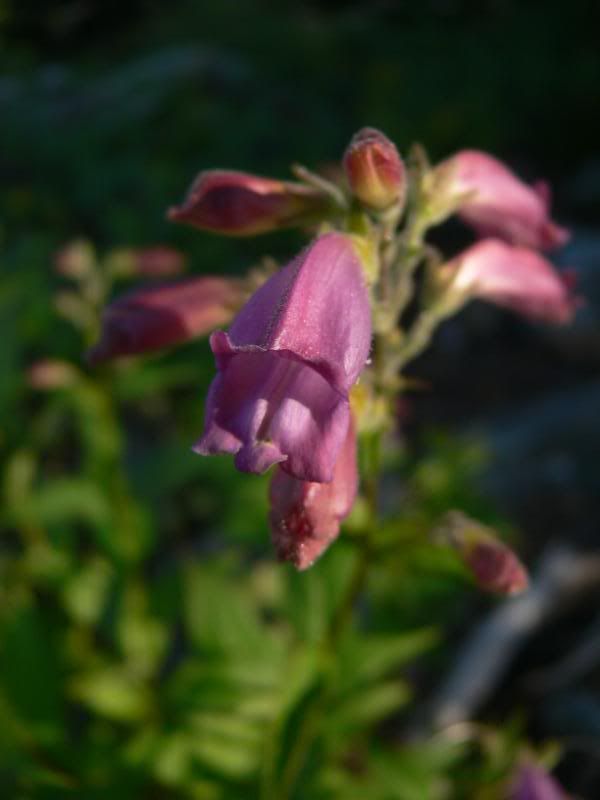
A plant whose leaves were dark purple: the flowers are also slightly darker than the others.
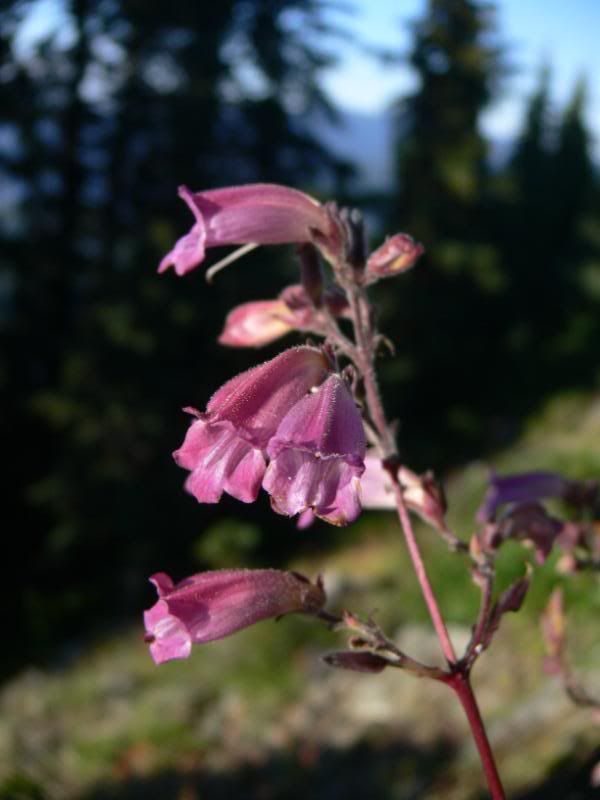
Ok, so I still haven't sat down and learned the Genus Penstemon... Please let me know what it is if you know.
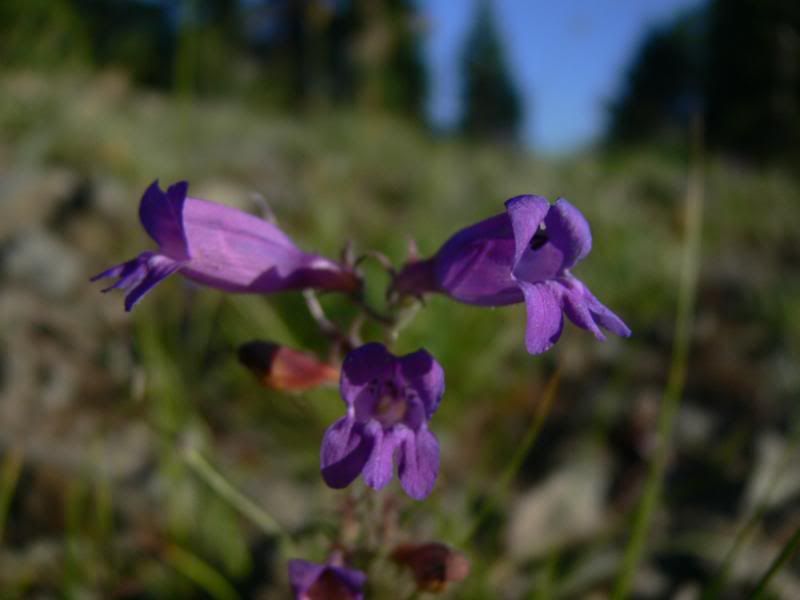
View from the top. The sky used some extra blue that day.
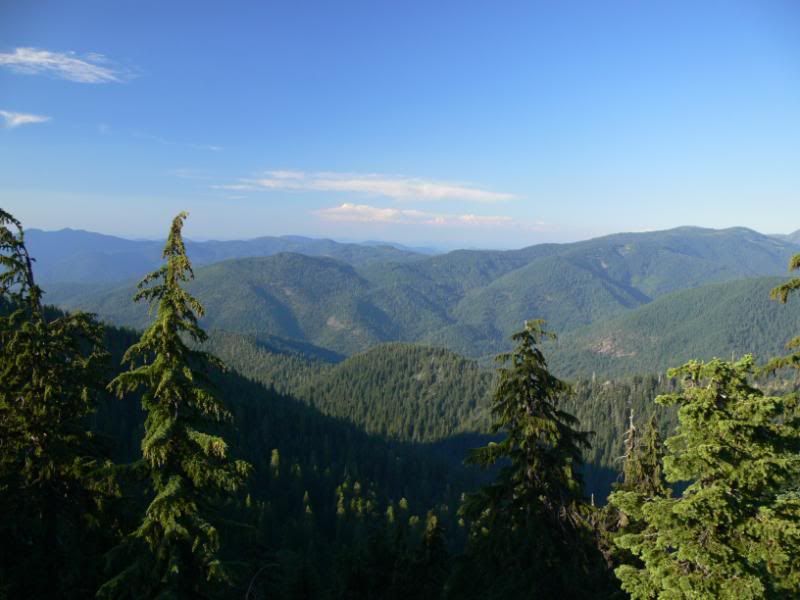

2 comments:
That is so cool. Do you hike up there much. Your so lucky to live in such a beautiful area. Great pictures. Have you grown any Proteas in that climate?
We hike within 20 miles of this spot every year, and try to mix it up with somewhere different each year. This lake is 300mi south of our home and it is at extreme altitude with extreme cold in the winter. Proteas wouldnt take the snow. I read that someone was trying to grow proteas in southern Oregon somewhere at low elevation. I still haven't tested my proteas outside in Portland. My plan is to plant out some next spring. They can easily take 25F, but lower will be interesting.
Post a Comment